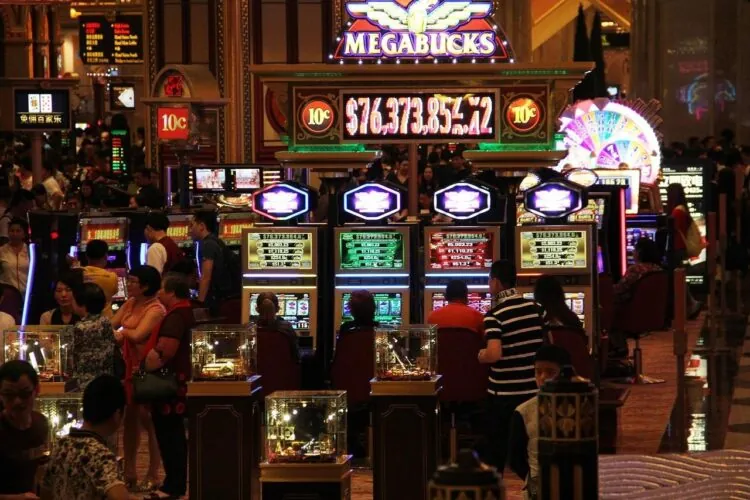Walk into any casino today and you’ll notice something strange – half of the slot machines sit empty while people stare at their phones, playing the exact same games online.
But that turn didn’t happen overnight, though. It took three decades to change gambling, from some smoky backrooms and neon-lit Vegas strips into a $300 billion empire that fits right in your pocket.
1994 – Year When Microgaming Built the Internet’s First Casino
Microgaming launched The Gaming Club in 1994, at first working only in South Africa under the name casino.co.za. But the site looked terrible – some basic HTML tables, pixelated cards, maybe a dozen games total. So, players had to phone in their deposits because online payments didn’t exist yet. Antigua and Barbuda passed the Free Trade and Processing Act in 1994, becoming the first nation to hand out online gambling licenses.
Well, think about that timing – most people still used dial-up modems, Amazon had just started selling books, while Google wouldn’t even exist for another four years. Yet someone looked at this primitive internet and thought: “Let’s put blackjack on here.”
By 1998, around 700 online casinos were operating – and the gold rush had begun. Random Number Generators became popular, building faith in the fairness of online gambling and attracting more players to virtual betting tables. Suddenly, you didn’t need a dealer to shuffle cards… as a computer could do it perfectly every time.
Pac-Man Ate the Casino – Arcade Games Became Million-Dollar Slots
Can you remember pumping quarters into arcade machines? Well, such games now bring millions in casino revenue. Space Invaders was so popular it caused a coin shortage in Japan and generated more revenue than the most popular movies of its time – but today, that same pixelated alien-shooting game lives on as a casino slot.
Branded slots made up 10% of slot titles in 2015, but by 2025, more than 50% of new slot releases could be branded titles. Pac-Man now chases multipliers and bonus rounds – Sydney-based Ainsworth partnered with Bandai Namco in 2016 to make Pac-Man Wild Edition, combining retro arcade feel with casino gambling.
The nostalgia factor works impressively – a forty-year-old who grew up in arcades now has disposable income. They see familiar characters and get hit with childhood memories – except now they can win real money.
But the interesting thing is that younger players seek something entirely new. They took that same impulse and moved it to crypto markets. They’re getting that rush of pulling a slot machine lever from opening a 100x leveraged Bitcoin position. The finest crypto leverage trading platforms find exchanges that offer up to 1000x leverage. Such platforms have some amazing features, such as instant execution, no KYC requirements, and massive multipliers that make the rest look conservative.
2007 – iPhone Showed Up and Changed Everything
Apple launched the iPhone in 2007, and within three years, every bigger casino had a mobile app. By 2024, U.S. internet penetration reached 94%, and the global online gambling market reached $95.3 billion. So, the math seems pretty simple: more phones equals more players equals more money.
But the technology got scary good as well. AI now personalizes gaming by recommending games, tracking preferences, and even detecting some problematic behavior. The apps know what you like better than you do – you get push notifications at exactly the right time.

America’s State-by-State Gold Rush
The U.S. market exploded once states realized how much tax revenue they were missing. Through August 2025, U.S. commercial gaming revenue hit $51.14 billion, almost 9% up from last year.
But three states take the lead, though. Michigan, New Jersey, and Pennsylvania form the “revenue triad,” each bringing more than $2.65 billion in the past year. So, not California or Texas – they’re relatively small states printing money from online gambling.
Live Dealers Bridge Two Worlds
Playtech launched the first live dealer platform in 2003, streaming real games from Costa Rica – and it solved online gambling’s biggest problem: trust. Players could see actual cards being dealt by real humans. Without some algorithms, or suspicion, but a real gambling through a screen.
Players chat with dealers and each other in live rooms, making communities where they exchange strategies and celebrate wins together. Some casinos even let you tip the dealer, which seems a bit bizarre – you’re sitting alone in your apartment, tipping someone in a studio thousands of miles away, pretending you’re both in Monte Carlo.
Big $300 Billion Question – Where It’s Headed?
The global casino and online gambling industry surpassed the $300 billion milestone last year, and might hit 449 billion in 2025. For context, that’s bigger than the global film industry and music industry together.
Europe leads with 48% market share, while Asia follows close behind – and the tech keeps pushing the whole industry forward. Microgaming introduced Virtual Reality casino games in 2016 using Oculus Rift technology. Blockchain promises “provably fair” games where every outcome gets verified on public ledgers.
But the fact is that gambling isn’t even that special anymore – it’s just another app. Another notification and a way to kill time. The ceremony disappeared through the years – no dress codes, free drinks, or social pressure.
So, that’s why physical casinos won’t die, but transform into entertainment complexes where gambling is one option among many. Online platforms will keep fragmenting into niches we can’t imagine yet.









